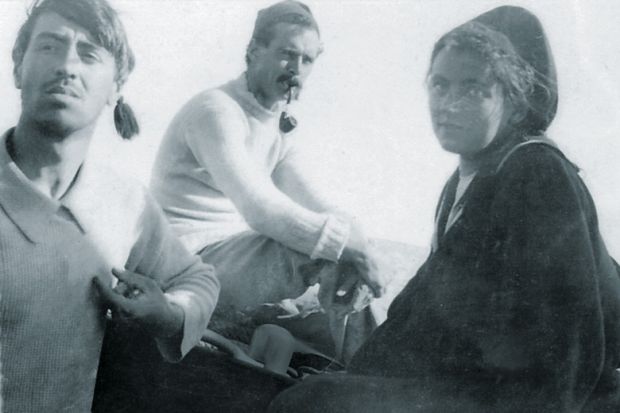Lysander, in A Midsummer Night’s Dream, complained that “the course of true love never did run smooth”. In 1907, Grace Oakeshott, née Cash, left her clothes on a French beach and swam out to sea. She was presumed drowned, but this was a carefully staged disappearance. She left behind a husband and a significant job in London for a new life in New Zealand with another man. It’s easy to see why Jocelyn Robson was determined to find out all she could about Grace and the two men in her life.
Robson is upfront about the limitations of her sources, and describes her disappointment at failing to find intimate material that might have detailed the evolution of Grace’s relationship with Walter Reeve and her disintegrating marriage with Harold Oakeshott. But what she has found, including material garnered from interviews with descendants, has been spun into something of a “narrative non-fiction”, as she terms it, page-turner.
In Robson’s telling, Grace, Harold and Walter are revealed as quietly remarkable, and this is her achievement. Left-wing and high-minded, each was actively involved in religious, social and political movements of fin de siècle South London. Familiar as we are with Beatrice and Sidney Webb, H. G. Wells and Ramsay and Margaret MacDonald, here we have people who brushed shoulders with them. These were more ordinary folk, but no less committed to making society more equitable. They also sought release from the constraints of social convention, via women’s rights and self-advancement through education.
Robson recreates their passions and uses their life stories as vehicles to explore the mores and context of these changing times. She dwells on Grace’s career in improving the training of young working-class women through the first Trade School for Girls (1904) and the Women’s Industrial Council, stressing her competence and pragmatism. Her administrative skill was recognised in her appointment as inspector of women’s technical classes for the progressive London County Council. This was all abandoned, along with her childless marriage, in 1907. In New Zealand she and Walter, a doctor, established their new life and had three children. She flexed her organising skills again during the First World War, before dying in 1929 of multiple sclerosis.
In living out their dream of a better future, these individuals broke with social convention and broke the law. Grace (and Harold) perhaps made a pragmatic decision to avoid the cost and ignominy of divorce. At this point I feel the need to write “spoiler alert!” because at the end Robson reveals that everyone knew what they were doing. Harold, who acquiesced in Grace’s disappearance, had a second, bigamous, marriage. Walter and Grace (now Joan) falsified birth and death certificates. In public the secret held, because the families wanted it that way. Harold and Grace may have been victims of the view that companionable marriage was more liberating than one based on love, and that public work was more socially useful than children. Robson laments she doesn’t have the answers, but posing the question has revealed a lot.
Helen Bynum is honorary research associate in the department of anthropology, University College London.
Radical Reformers and Respectable Rebels: How the Two Lives of Grace Oakeshott Defined an Era
By Jocelyn Robson
Palgrave Macmillan, 256pp, £20.00
ISBN 9781137311832, 9781349672271 and 9781137311849 (e-book)
Published 3 February 2016
POSTSCRIPT:
Print headline: ‘Lost’ for love and a new life
Register to continue
Why register?
- Registration is free and only takes a moment
- Once registered, you can read 3 articles a month
- Sign up for our newsletter
Subscribe
Or subscribe for unlimited access to:
- Unlimited access to news, views, insights & reviews
- Digital editions
- Digital access to THE’s university and college rankings analysis
Already registered or a current subscriber?




